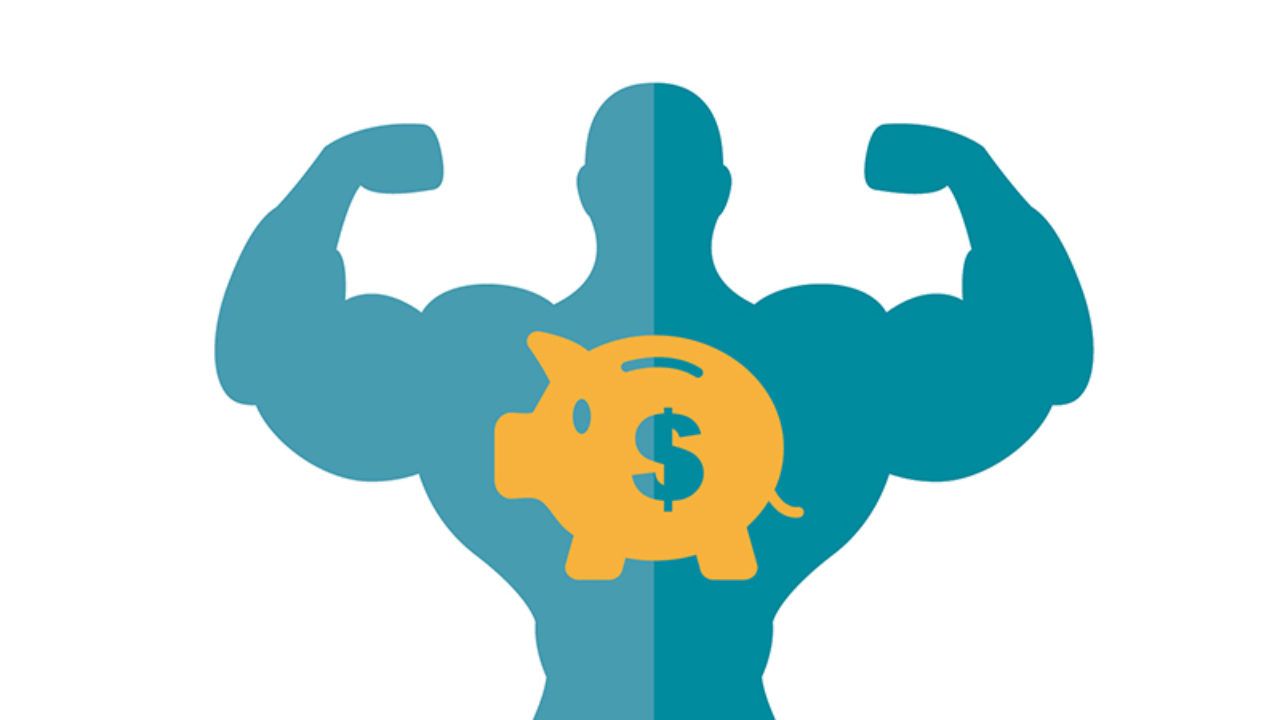How the Change in Retirement Laws Will Affect You
I trust everyone had a wonderful holiday season. Whether you reached your personal goals last year or faced challenges, a new year brings new opportunities and a fresh start.
Let’s jump right into this month’s topic. The Setting Every Community Up for Retirement Enhancement Act of 2019, popularly known as the SECURE Act, was signed into law in late 2019.
Now called SECURE Act 1.0, it included provisions that raised the requirement for mandatory distributions from retirement accounts and increased access to retirement accounts.
But it didn’t take long for Congress to enhance the landmark bill that was enacted barely three years ago.
Tucked inside a just-passed 4,155-page, $1.7 trillion spending bill are plenty of goodies, including another overhaul of the nation’s retirement laws.
Dubbed SECURE Act 2.0, the bill enjoys widespread bipartisan support and builds on SECURE Act 1.0 by strengthening the financial safety net by encouraging Americans to save for retirement.
9 key takeaways on SECURE Act 2.0
1) Changing the age of the required minimum distributions. Three years ago, SECURE Act 1.0 increased the age for taking the required minimum distribution, or RMD, to 72 years from 70½. If you turn 72 this year, the age required for taking your RMD rises to 73 with SECURE Act 2.0.
If you turned 72 in 2022, you’ll remain on the prior schedule.
If you turn 72 in 2023, you may delay your RMD until 2024, when you turn 73. Or you may push back your first RMD to April 1, 2025. Just be aware that you will be required to take two RMDs in 2025, one no later than April 1, and the second no later than December 31.
Starting in 2033, the age for the RMD will rise to 75.
Employees enrolled in a Roth 401(k) won’t be required to take RMDs from their Roth 401(k). That begins in 2024.
In our view, the SECURE Act 1.0 and 2.0 updates were long overdue. The new rules recognize that Americans are living and working longer.
2) RMD penalty relief. Beginning this year, the penalty for missing an RMD is reduced to 25% from 50%. And 2.0 goes one step further. If the RMD that was missed is taken in a timely manner and the IRA account holder files an updated tax return, the penalty is reduced to 10%.
But let’s be clear, while the penalty has been reduced, you’ll still pay a penalty for missing your RMD.
3) A shot in the arm for employer-sponsored plans. Too many Americans do not have access to employer plans or simply don’t participate.
Starting in 2025, companies that set up new 401(k) or 403(b) plans will be required to automatically enroll employees at a rate between 3% and 10% of their salary.
The new legislation also allows for automatic portability, which will encourage folks in low-balance plans to transfer their retirement account to a new employer-sponsored account rather than cash out.
In order to encourage employees to sign up, employers may offer gift cards or small cash payments. Think of it as a signing bonus.
Employees may opt out of the employer-sponsored plan.
4) Increased catch-up provisions. In 2025, SECURE Act 2.0 increases the catch-up provision for those between 60 and 63 from $6,500 in 2022 ($7,500 in 2023 if 50 or older) to $10,000, (the greater of $10,000 or 50% more than the regular catch-up amount). The amount is indexed to inflation.
Catch-up dollars are required to be made into a Roth IRA unless your wages are under $145,000.
5) Charitable contributions. Starting in 2023, 2.0 allows a one-time, $50,000 distribution to charities through charitable gift annuities, charitable remainder unitrusts, and charitable remainder annuity trusts. One must be 70½ or older to take advantage of this provision.
The $50,000 limit counts toward the year’s RMD.
It also indexes an annual IRA charitable distribution limit of $100,000, known as a qualified charitable distribution, or QCD, beginning in 2023.
6) Back-door student loan relief. Starting next year, employers are allowed to match student loan payments made by their employees. The employer’s match must be directed into a retirement account, but it is an added incentive to sock away funds for retirement.
Additional provisions
7) Disaster relief. You may withdraw up to $22,000 penalty-free from an IRA or an employer-sponsored plan for federally declared disasters. Withdrawals can be repaid to the retirement account.
8) Help for survivors. Victims of abuse may need funds for various reasons, including cash to extricate themselves from a difficult situation. SECURE Act 2.0 allows a victim of domestic violence to withdraw the lesser of 50% of an account or $10,000 penalty-free.
9) Rollover of 529 plans. Starting in 2024 and subject to annual Roth contribution limits, assets in a 529 plan can be rolled into a Roth IRA, with a maximum lifetime limit of $35,000. The rollover must be in the name of the plan’s beneficiary. The 529 plan must be at least 15 years old.
In the past, families may have hesitated in fully funding 529s amid fears the plan could wind up being overfunded and withdrawals would be subject to a penalty. Though there is a $35,000 cap, the provision helps alleviate some of these concerns.
Sources: Secure Act 2.0 Act of 2022;
SECURE 2.0: Rethinking Retirement Savings;
Congress Passes Major Boost to Retirement Savings;
The 401(k) and IRA Changes to Consider After Congress Revised Many Retirement Laws
Final thoughts
We welcome these changes. Many Americans lack adequate savings, and the just-enacted bill helps address some of the challenges many face as they march toward retirement.
What we have provided here is a high-level overview of the SECURE Act 2.0. Keep in mind that it is not all-inclusive.
We are always here to assist you, answer your questions, and tailor any advice to your needs.
Additionally, feel free to reach out to your tax advisor with any tax-related questions.
Epilogue: Insights and a numerical overview
The year 2022 was an unpleasant one for investors. The Dow Jones Industrial Average (30 stocks) and the broader-based S&P 500 (500 stocks spread across major industries) peaked as the year began (Yahoo Finance data).
The Fed’s response to stubbornly high inflation prompted the fastest series of rate hikes since 1980, according to data from the St. Louis Federal Reserve.
While we would never discount the severe humanitarian crisis that has unfolded for our friends in Europe, market woes were compounded by Russia’s illegal invasion of its neighbor.
The war on Ukraine exacerbated inflation by temporarily sending oil prices much higher and lifting commodities such as wheat.
The allied response designed to punish Russia also trickled into financial markets.
Put another way, the favorable economic fundamentals we were treated to in the 2010s—low interest rates, low inflation and modest economic growth shifted dramatically last year.
The economy expanded, but the interest rate and inflation environment overwhelmed any tailwinds from economic and profit growth.
Notably, however, the returns on major market averages varied widely. The Dow lost 8.8%, while the S&P 500 Index gave up 19.4%, the biggest disparity in over 60 years, according to CNBC.
Furthermore, the tech-heavy, growth-heavy Nasdaq stumbled badly amid the high-rate environment.
In hindsight, it’s not surprising, as we’d expect fast-growing firms such as technology to be the most sensitive to higher interest rates. A slowdown in growth in the sector compounded problems.
| Index | MTD % | YTD % |
|---|---|---|
| Dow Jones Industrial Average | -4.2 | -8.8 |
| Nasdaq Composite | -8.8 | -33.1 |
| S&P 500 Index | -5.9 | -19.4 |
| Russell 2000 Index | -6.6 | -21.6 |
| MSCI World ex-U.S.A* | -0.6 | -16.6 |
| MSCI Emerging Markets* | -1.6 | -22.4 |
| Bloomberg Barclays U.S. Aggregate Bond TR USD | 0.5 | -13.0 |
Key Index Returns
Source: Wall Street Journal, MSCI.com, MarketWatch, Bloomberg
MTD returns: November 30, 2022–December 30, 2022
YTD returns: December 31, 2021–December 30, 2022
*U.S.D.
The disparity between the Dow and the S&P 500 is puzzling at first glance. When looking at just the Dow, one might be tempted to ask, “What bear market?”
Or, don’t both indexes basically cover the same industries? Well, not exactly.
If you look under the hood, the answer surfaces.
“The Dow has done better because it was underweighted in those areas that fell the furthest and overweighted in those areas that did better,” said Sam Stovall, chief investment strategist at CFRA Research.
The Dow also benefitted from its more defensive composition, including a heavier emphasis on health care. Despite the wide disparity last year, over time the index performance tends to correlate more closely.
Key numbers
In recent years, uncertainty in equities has aided bonds, as investors sought safety in fixed income.
Last year was a notable exception. The yield on the 10-year Treasury bond rose from 1.63% at the beginning of the year to 3.88% by year-end (U.S. Treasury Dept). Bond prices and yields move in opposite directions, which pushed bond prices down.
The drop in bond prices can be traced to the sharp rate hikes from the Federal Reserve.
Inflation is the root of the problem. A year ago, the Fed belatedly recognized that 2021’s surging inflation wasn’t simply “transitory,” its word of choice at the time.
The annual CPI was running at 7.0% in December 2021; it peaked at 9.1% in June and moderated to a still-high 7.1% by November, the last available reading according to the U.S. Bureau of Labor Statistics.
The recent slowdown in inflation is welcome, but a couple of months of lower readings aren’t exactly a trend, at least in the Fed’s eyes.
While the Fed appears set to slow the pace of rate increases in 2023, it has signaled that the eventual peak will last longer, as it attempts to bring the demand for goods, services, and labor into alignment with the supply of goods, services and labor.
Of course, the Fed’s weapon of choice—higher interest rates—is a blunt instrument. It does not operate with the precision of a surgeon, and pain won’t be and hasn’t been spread evenly.
Despite chatter in some corners that we are in a recession, a 3.7% jobless rate, which is just below this year’s low of 3.5%, coupled with still-robust job growth, is sending a signal that the economy continues to expand.
However, this year could bring new challenges, and attention has slowly been shifting away from inflation to economic performance.
The Conference Board’s Leading Economic Index is far from a household name. But it is a closely watched index designed to foreshadow a recession. It’s not a good timing tool, nor should it be used to forecast the depth of a recession. But it has never failed to peak in front of a recession (data back to 1960).
Through November, it has fallen for nine-straight months, according to the Conference Board.
Moreover, more than two-thirds of the economists at 23 large financial institutions expect the U.S. will slide into recession this year.
Nevertheless, a recession is not a foregone conclusion. A resilient labor market and a sturdy consumer, with borrowing power and some pandemic cash still in the bank, could support economic growth this year.
Ultimately, we counsel that you must control what you can control. We can’t control the stock market or the economy. Events overseas are out of our control. But we can control the financial plan.
It’s not set in concrete, and we encourage adjustments as life unfolds. While we caution against making changes simply based on market action, has your tolerance for risk changed considering this year’s volatility? If so, let’s talk.
I trust you’ve found this review to be educational and helpful. Once again, let me remind you that before making decisions that may impact your taxes, it is best to consult with your tax advisor.
If you have any questions or would like to discuss any matters, please feel free to give me or any of my team members a call.
Love this post? Share it with your friends!
The views stated in this letter are not necessarily the opinion of LPL Financial and should not be construed directly or indirectly as an offer to buy or sell any securities mentioned herein. Due to volatility within the markets mentioned, opinions are subject to change without notice. Information is based on sources believed to be reliable; however, their accuracy or completeness cannot be guaranteed. Past performance does not guarantee future results. For a comprehensive review of your personal situation, always consult with a tax or legal advisor. Neither LPL FInancial nor any of its representatives may give legal or tax advice.












